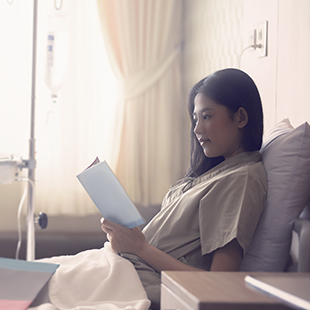How quality lighting helps patients recover
Good quality light can support patients’ wellbeing and help them recover from treatment more quickly. Here’s how good design supports the best outcomes

We all know that being stuck in a windowless room can feel oppressive, that artificial light can sometimes feel harsh and uncomfortable, and that a little daylight can be refreshing. For patients recovering in hospital, these effects are heightened.
And while these feelings may be familiar, the science behind them is only gradually being understood. Some of it has to do with how well we can see and how the environment around us looks, but it also has to do with the effect of light on our bodies – helping us to keep time and regulating things like hormone release and sleep-wake cycles.
Light is a big factor in this, so better lighting means a better patient experience, as well as helping hospitals to free up space and manage costs.
For lighting professionals wondering how to put all this into practice, the best way to start is by looking out of the window.
The importance of daylight and the combination to artificial light
People love daylight – it feels bright, natural and healthy. And it usually comes with a view out of a window, so we associate it with a connection to nature and the outside world. Studies have shown that patients in beds closer to windows tend to leave hospital sooner, and natural light is likely to be a factor in this.
Daylight should be incorporated into lighting designs wherever possible, complemented by artificial light. Controls can be used to dim or turn off artificial lights when they’re not needed.
However, it’s not always possible to use daylight, so artificial light can also be made patient-friendly. In clinical areas, light may feel harsh because it needs to be very bright and clear. In areas where patients are recuperating, lighting should be soft and diffuse to flatter people’s appearance. Colours should feel natural. When people see others around them, or themselves in a mirror, they want to see people who look healthy and well.
A thoughtful lighting scheme
The colour temperature of light – how “warm” or “cool” it appears – makes a difference. A neutral 4000K will be preferable in many clinical areas, but in areas where patients need to relax, a warmer 3000K may be more appropriate.
Of course, different patients have different preferences and needs. For instance, as we get older, we tend to prefer higher levels of light. Light is also particularly important for people with mental health conditions that may impact their mood and sleep cycles. Giving patients and staff control of light helps accommodate the wide variety of needs.
An investment of time and effort in selecting the right lighting products and designing a thoughtful lighting scheme will reap benefits by making sure that a stay in hospital is always as pleasant – and as short – as possible.

